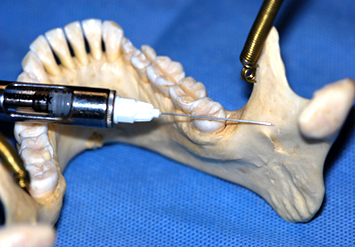SINGLE INSERTION TECHNIQUE DIRECTED BY THE ANTERIOR-THUMB AND THE POSTERIOR-FINGER FOR MANDIBULAR ANESTHESIA
Keywords:
Inferior alveolar nerve block, lingual nerve, long buccal nerve, mandibular anesthesia, single insertion technique, tactile guidanceAbstract
Background and objectives: Since it has a major impact on patient comfort, compliance, and treatment results overall, effective pain management is essential to dental and maxillofacial operations. In the field of mandibular anesthesia, the inferior alveolar nerve block (IANB) is one of the most commonly utilized method. It anesthetizes the lower lip, mandibular teeth, and related soft tissues. The aim of the study was to assess the effectiveness of the Single Insertion Technique (SIT) for concurrent anesthesia of the long buccal (LBN), lingual (LN), and inferior alveolar (IAN) nerves.
Subjects and Methods: A prospective clinical trial was performed on 1,000 patients aged 18-65 years requiring mandibular procedures. This procedure involved inserting a single long needle, guided by intraoral palpation of the anterior border and extra orally supported along the posterior ramus. Lidocaine (2%) with 1:80,000 epinephrine was administered sequentially to the internal alveolar nerve (IAN), the long buccal nerve (LN), and the lower alveolar nerve (LBN) after passive aspiration.
Results: High success rates were observed: 95% for IAN, 98% for LN, and 85% for LBN blocks. Mean onset times were 3.3 minutes (IAN), 2.2 minutes (LN), and 2.0 minutes (LBN). Anesthesia duration ranged from 40 to 90 minutes, with the IAN block lasting the longest. Patient satisfaction scores exceeded 9/10 across all blocks. A strong negative correlation (r= -0.85 to -0.78, p<0.001) was found between onset time and success rate, indicating that faster onset is associated with greater anesthetic success.
Conclusions: This study demonstrated that the single-entry mandibular nerve block technique, focusing on the anterior thumb and posterior finger landmarks, is a reliable method for anesthetizing the inferior alveolar, lingual, and long buccal nerves. This technique has a high overall success rate (92%), rapid onset, satisfactory duration, and high patient satisfaction, demonstrating strong clinical potential.

Peer Review History:
Received 9 June 2025; Reviewed 11 July 2025; Accepted 24 August; Available online 15 September 2025
Academic Editor: Dr. Ali Abdullah Al-yahawi , Al-Razi university, Department of Pharmacy, Yemen, alyahawipharm@yahoo.com
, Al-Razi university, Department of Pharmacy, Yemen, alyahawipharm@yahoo.com
Reviewers:
 Antonio José de Jesus Evangelista, Federal University of Ceará, UFC, Brazil, tony_biomed@hotmail.com
Antonio José de Jesus Evangelista, Federal University of Ceará, UFC, Brazil, tony_biomed@hotmail.com
 Dr. Adebayo Gege Grace Iyabo, University of Ibadan, Nigeria, funbimbola@gmail.com
Dr. Adebayo Gege Grace Iyabo, University of Ibadan, Nigeria, funbimbola@gmail.com
Downloads

Published
How to Cite
Issue
Section
Copyright (c) 2025 Universal Journal of Pharmaceutical Research

This work is licensed under a Creative Commons Attribution-NonCommercial 4.0 International License.









 .
.